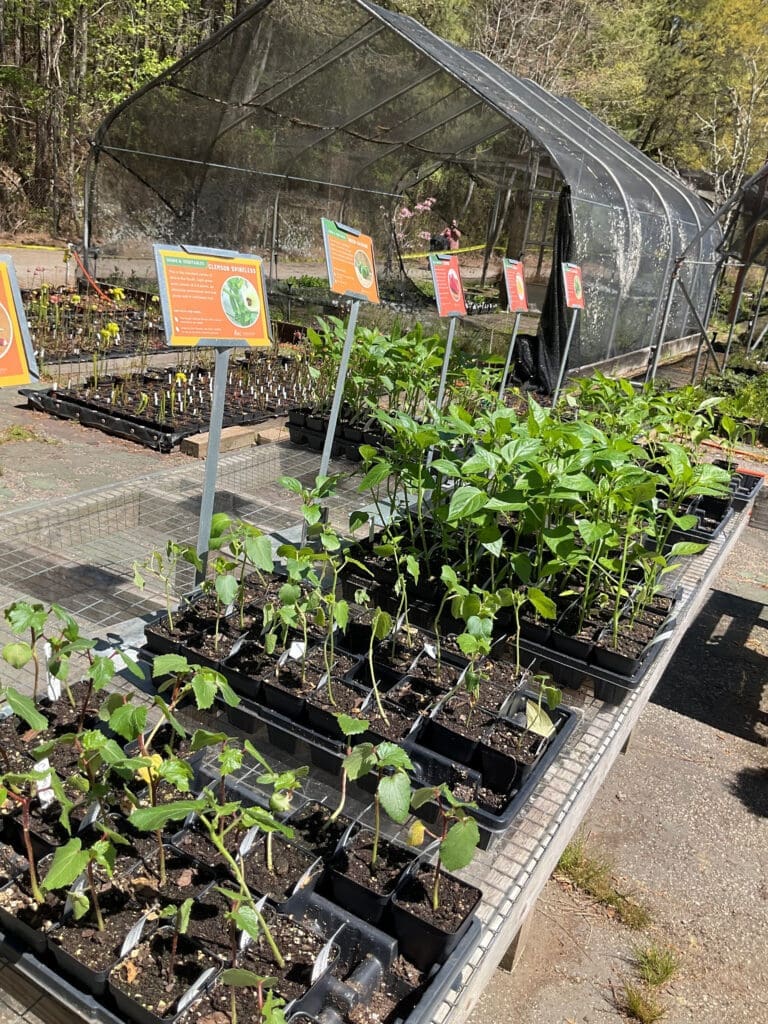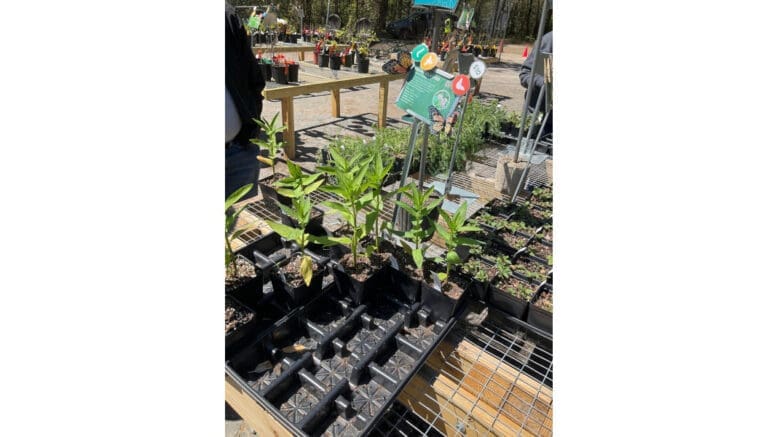Photo by Juliane Balog
By Juliane A. Balog
- Native plant sale presented by the Chattahoochee Nature Center took place from 9 a.m. to 5 p.m. April 5-6.
- Attendees shopped from a wide variety of Georgia native plants
- There were educated volunteers and board members to help attendees find a plant best suited for their garden
The Chattahoochee Nature Center hosted a Georgia native plant sale April 5-6 to help promote the use of native flora and pollinators within residential gardens that will attract a variety of birds, insects and mammals.
Native flora such as native azaleas, milkweed and even carnivorous plants, add diversity to an area and create a more welcoming greenspace. Flowers purchased at big chain hardware stores are not well adapted to the environment. They have not adapted to local soil, climate or animals. Fauna such as the monarch butterfly depend on milkweed to lay their eggs. Hummingbirds need azaleas for nutrients.
“Native plants are adapted to the environment,” said Gary Ludi, a CNC trustee. “They are food for native animals.”
The native plant sale drew in many people: those looking to diversify their gardens, people looking for propagated pollinators that have yet to enter their bloom season, and those learning how to grow their own vegetables.
“Gardening is something you have to love,” said Angela, a CNC native plant sale attendee. “ It is a lot of work and requires dedication.”

Swamp Milkweed
Swamp milkweed, Asclepias Incarnata, is native to Georgia, much of the United States and the eastern side of Canada.
It is very popular with monarch butterflies. As they migrate they use the milkweed’s leaves as a place to rest and lay their eggs.
Henning Von Schmeling, a conservation horticulturist, conducted an experiment to see just how many eggs a female monarch butterfly lays at one time. He found that at the beginning of the breeding cycle, monarchs lay fewer eggs than they do in the middle of the cycle, peaking at around 100 eggs in 24 hours. “They call me the milkweed man of Georgia,” said Von Schmeling.
Swamp milkweed is grown in swamps and meadows, requiring wet soil and a full sun environment. The bloom season starts in June and ends in October.
Native Azaleas
The Chattahoochee Nature Center propagates many native plant species, including a variety of azaleas.
Azaleas bloom between April and October. Each species has a different bloom schedule. For example, the Florida Flame Azalea bloom schedule starts in March and ends in late April, while the coastal azalea blooms in May and is an important pollinator providing specialized bees nectar.
As hummingbirds migrate, they feed off the nectar of the flowers and pick off insects to feed their young. While the hummingbird loves the sweet nectar of azalea plants, the azalea plant is toxic to humans.
Carnivorous Bog Plants
Bog plants were a big hit at the native plant sale for their unique feeding habits.

Venus fly traps feed off insects such as flies, spiders and caterpillars. The Pitcher Plant also gets nutrients from digesting unexpecting insects.
Bog-living plants require waterlogged, moist environments to grow. Although they feast on insects for nutrients, they still need to get nutrients from root systems and photosynthesis. To keep pollinators safe, carnivorous plants bloom the flower far away from the digestive organ.
“They’re just cool,” said Gary Ludi, CNC trustee. “They are plants that eat insects to survive.”

My name is Juliane Balog. I am a junior and a journalism student at Kennesaw State University. Originally I’m from Carlsbad, California but have lived in Cobb County for three years. Growing up walking distance from the beach gave me a deep appreciation for the environment. I aim to incorporate my passion for writing and environmentalism into a fulfilling career as a journalist.
